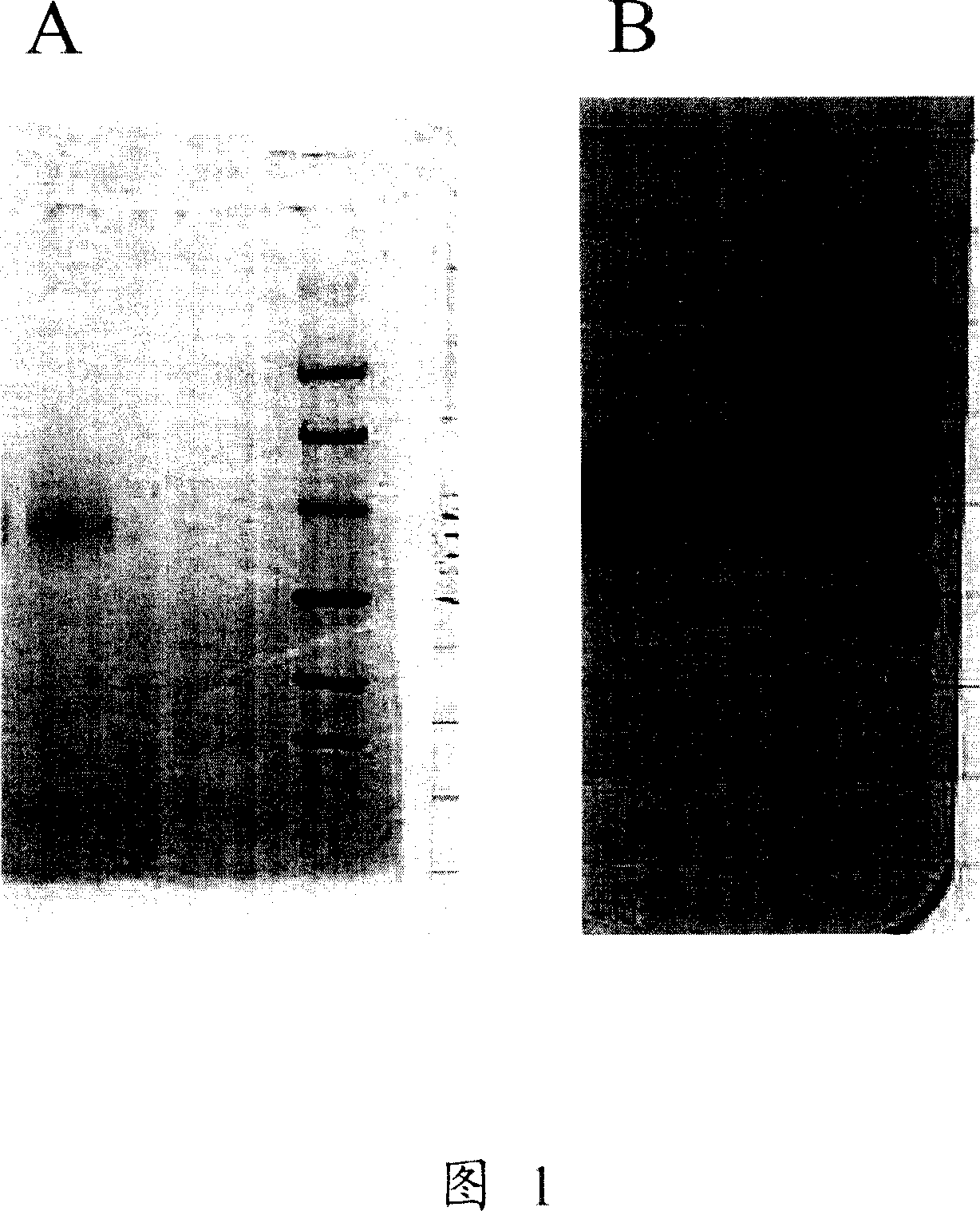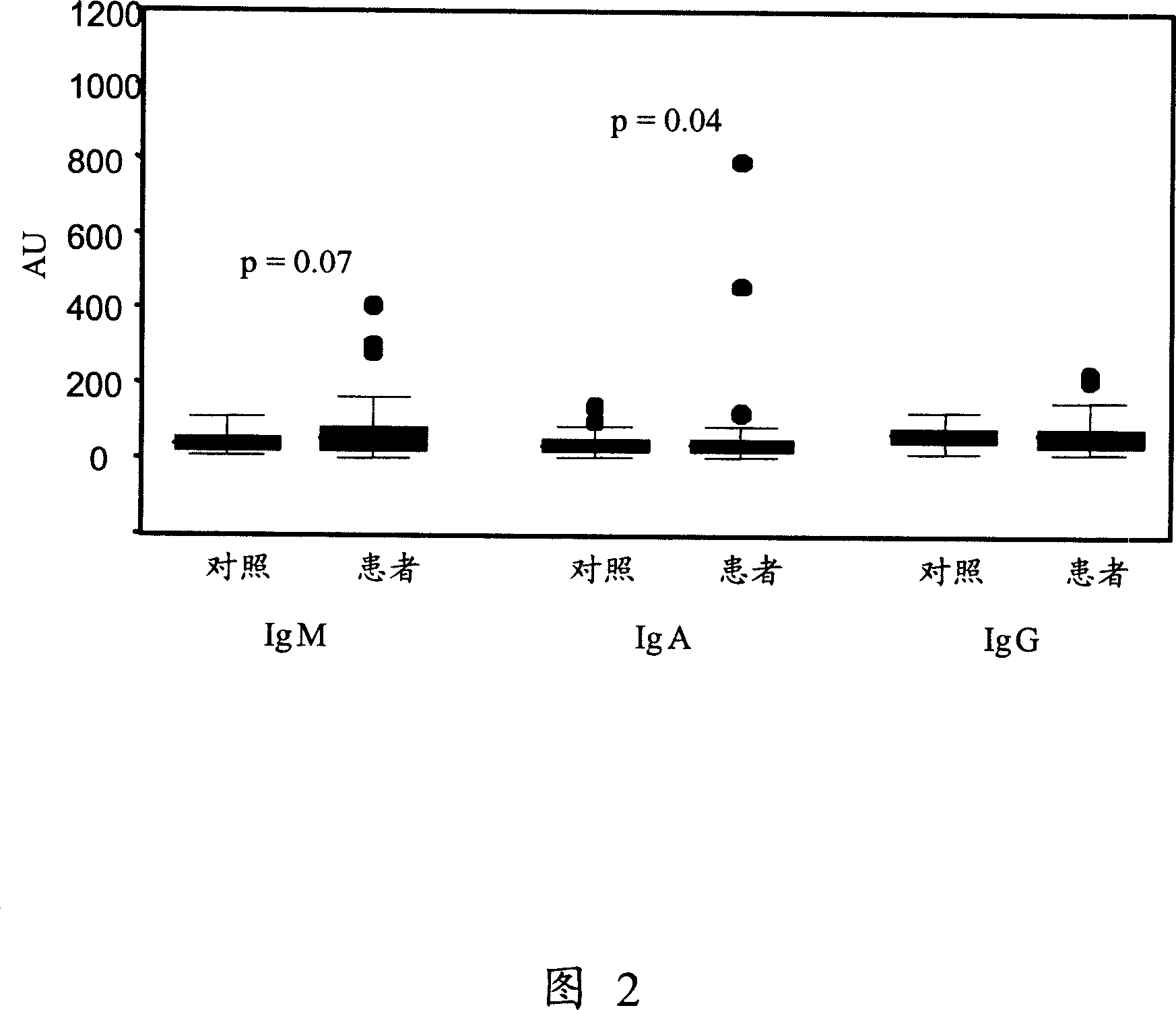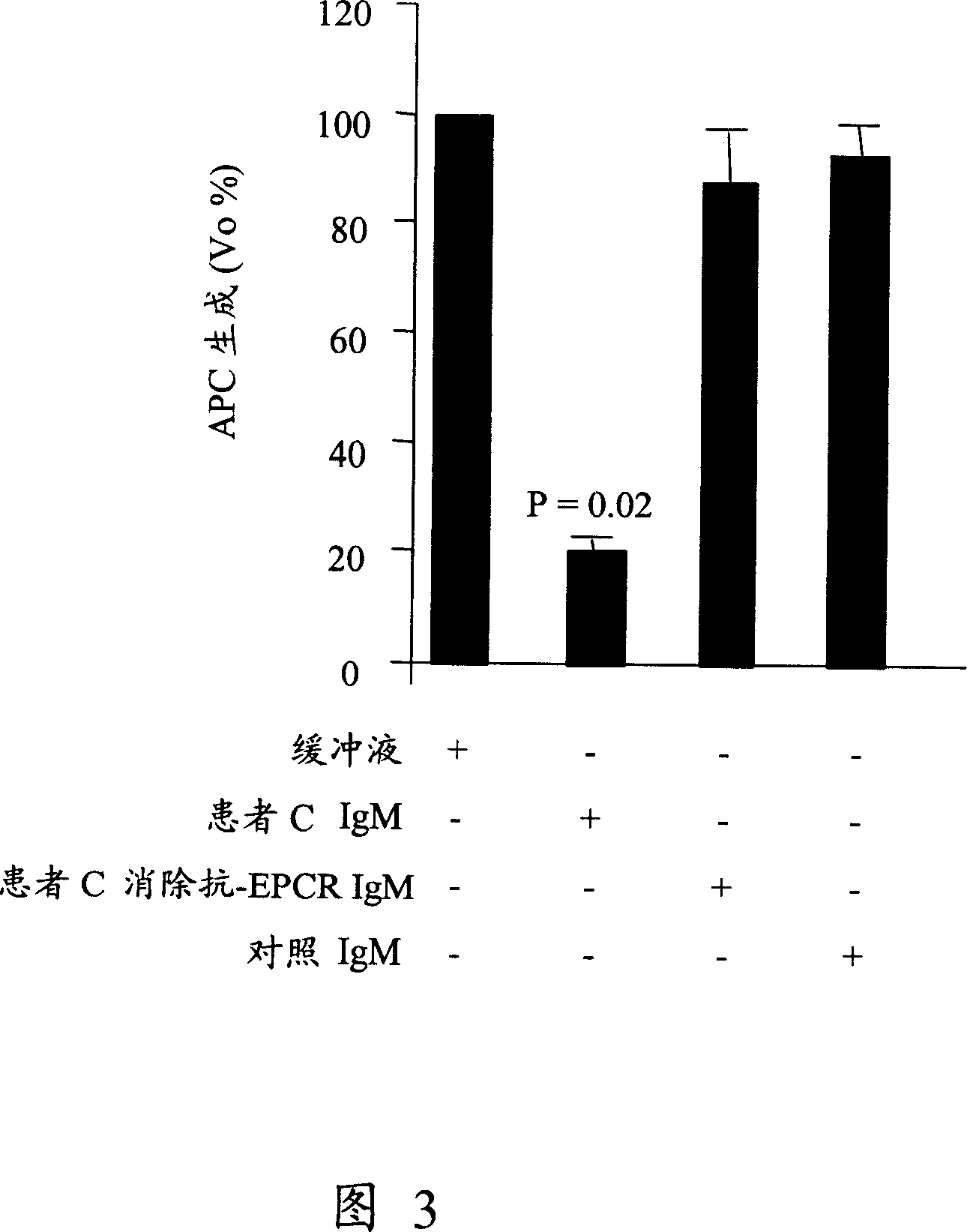Method of assessing risk of and predisposition to the development of a pathology related to the presence of anti-EPCR antibodies
An autoantibody, antibody technology, applied in receptors/cell surface antigens/cell surface determinants, measuring devices, instruments, etc., can solve problems such as unknown antiphospholipid antibodies
- Summary
- Abstract
- Description
- Claims
- Application Information
AI Technical Summary
Problems solved by technology
Method used
Image
Examples
Embodiment 1
[0062] Example 1: Application of anti-EPCR autoantibodies as individuals present with high levels of autoantibodies There are markers of risk and susceptibility to associated pathologies
[0063] I. Materials and methods
[0064] patient
[0065] 1. APLS patients and controls
[0066] A total of 43 patients [age 44±11 years (mean age±standard deviation (SD)), 39 females and 4 males] were included in this study, according to the international diagnostic criteria between February 1998 and March 2002 [Wilson WA, Gharavi AE, Koike T, Lockshin MD, BranchDW, Piette JC, Brey R, Derksen R, Harris EN, Hughes GR, Triplett DA, Khamashta MA. International consensus statement on preliminary classification criteria for definite antiphospholipid syndrome: report of an international workshop( Internationally harmonized presentation of the preliminary classification criteria used to define antiphospholipid syndrome: report from an international workshop). Arthritis Rheum. 1999; 42: 13...
Embodiment 2
[0134] Example 2: Detection of anti-EPCR autoantibodies in women with myocardial infarction
[0135] research group : 142 women with myocardial infarction (age 39±5 years, mean±standard deviation) and 142 healthy women (age 39±5 years), paired by age and geographic origin. Classical myocardial infarction risk factors (hypertension, hypercholesterolemia, diabetes, smoking, and oral contraceptives) were studied. Anti-EPCR autoantibodies IgG, IgM and IgA in the plasma samples were analyzed according to the ELISA test method described in "Materials and Methods" (Example 1).
[0136] result : High levels of anti-EPCR autoantibodies, defined as values exceeding the 93rd percentile of the distribution of anti-EPCR antibody levels in the control group, were associated with an increased risk of myocardial infarction. In multivariate analysis, high levels of anti-EPCR antibodies were associated with an adjusted odds ratio (OR) of 3.5 for IgA, with a confidence interval (95% CI)...
PUM
 Login to view more
Login to view more Abstract
Description
Claims
Application Information
 Login to view more
Login to view more - R&D Engineer
- R&D Manager
- IP Professional
- Industry Leading Data Capabilities
- Powerful AI technology
- Patent DNA Extraction
Browse by: Latest US Patents, China's latest patents, Technical Efficacy Thesaurus, Application Domain, Technology Topic.
© 2024 PatSnap. All rights reserved.Legal|Privacy policy|Modern Slavery Act Transparency Statement|Sitemap



